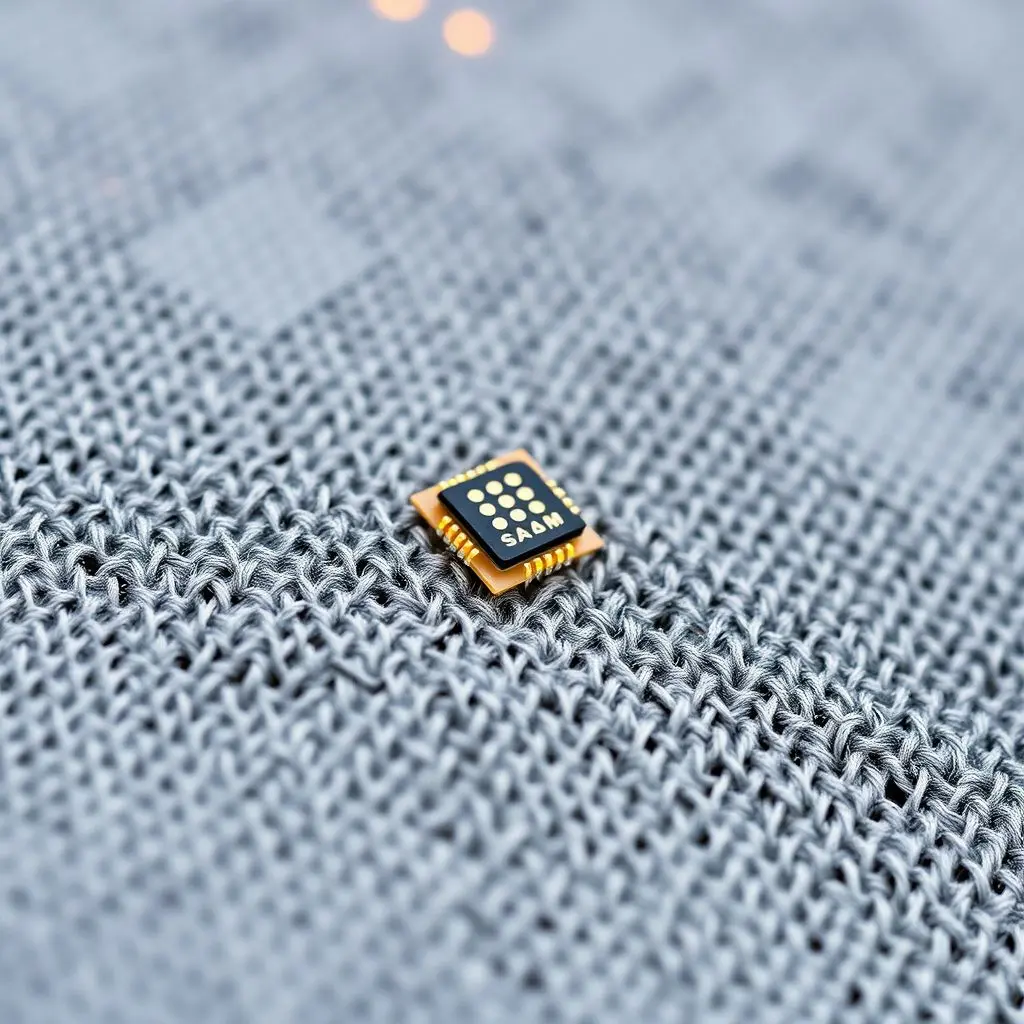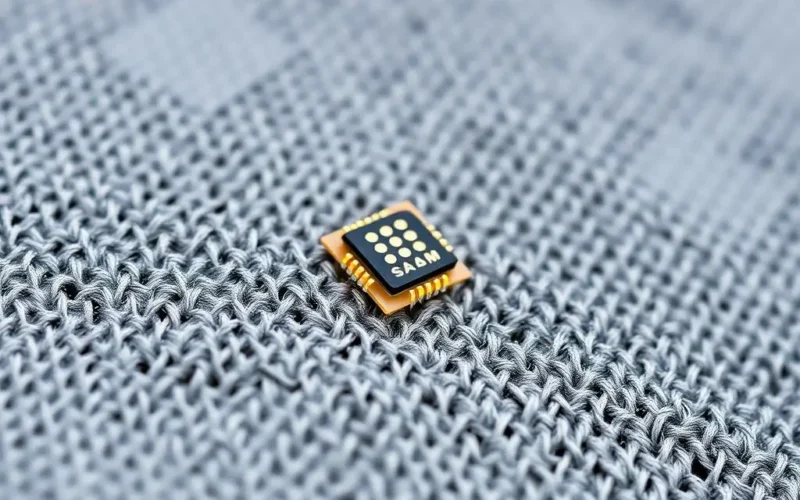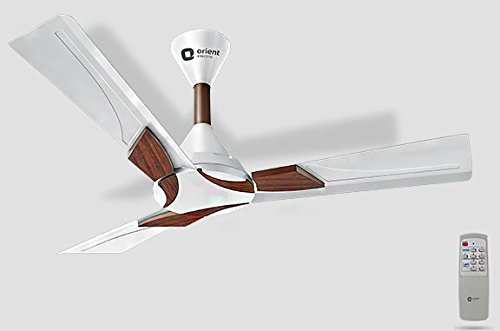What if your everyday clothes could do more than just make you look good or keep you comfortable? Imagine a world where the fabric against your skin is also silently, effortlessly tracking your well-being. This isn’t science fiction anymore; it’s the burgeoning reality of smart clothing designed for health monitoring.
We’re talking about garments woven with intelligence – tiny, unobtrusive sensors seamlessly integrated into the textile. These aren’t bulky gadgets you strap on; they are part of the material itself, designed to monitor vital signs like your heart rate, respiratory rate, sleep patterns, and potentially even stress levels, all day, every day.
This revolutionary approach provides a continuous stream of real-time health data, offering powerful insights into your personal wellness journey without the need for extra devices or conscious effort. It’s the ultimate in effortless health tracking, paving the way for early detection of potential trends and giving you tangible proof of your fitness progress – quite literally, worn on your sleeve.
Curious to see what this future looks like? Here’s a quick visual bite introducing the concept:
Pretty smart, right? Let’s dive deeper into how this technology is changing the game.
Table of Contents
What Exactly is Smart Clothing for Health?
At its core, smart clothing for health monitoring is textile-based technology that integrates electronic components like sensors, conductive fibers, and sometimes even micro-processors directly into the fabric of a garment. The goal is to create ‘wearable’ tech that is indistinguishable from regular clothing in terms of comfort, drape, and appearance, while actively collecting physiological data from the wearer.
Unlike rigid smartwatches or chest straps, smart garments offer a more natural, continuous, and less intrusive way to monitor health. The larger surface area of clothing allows for the distribution of multiple sensors across the body, potentially capturing a more comprehensive physiological picture.

The Science Woven In: How it Works
The magic behind smart clothing lies in the clever integration of microelectronics into textiles. Here’s a simplified look at the process:
- Sensors: These are the data collectors. Different types of sensors are used depending on what needs to be measured:
- Electrodes: Woven or printed onto the fabric, these can measure electrical signals from the body, like those generated by the heart (ECG/EKG) or muscles (EMG).
- Piezoelectric Sensors: These generate a voltage when stretched or compressed, useful for detecting movement, breathing patterns, or posture changes.
- Strain Gauges: Measure how much the fabric is stretching or deforming, helping to track movement and body position.
- Temperature Sensors: Monitor skin temperature.
- Conductive Fibers/Inks: Act as the ‘wiring’ within the garment, connecting the sensors to a small, often detachable, processing unit.
- Data Collection & Processing: The tiny sensors pick up physiological signals. These signals are then routed through the conductive pathways to a small electronic module, usually clipped onto the garment. This module contains a micro-processor to clean up and process the raw data.
- Transmission: The processed data is typically sent wirelessly via Bluetooth or similar low-power technology to a connected smartphone app or cloud platform. This allows for real-time monitoring and long-term data storage and analysis.
- Power: Smart garments require a power source, usually a small, rechargeable battery pack connected to the processing module. Battery life varies depending on the sensors and usage.
The design challenge is making these components durable, flexible, washable, and comfortable, without sacrificing accuracy.
What Health Metrics Can Your Clothes Track?
The capabilities of smart clothing are constantly expanding, but current technology allows for monitoring of several key health indicators:
- Heart Rate & ECG: Often considered a standard, smart shirts and bras can provide continuous heart rate data, similar to a chest strap. Some advanced garments can even capture a medical-grade single-lead electrocardiogram (ECG), which can detect irregular heart rhythms.
- Respiratory Rate: Sensors can detect the subtle expansion and contraction of the chest or abdomen during breathing, providing insights into breathing patterns and rate.
- Activity and Movement: Accelerometers and gyroscopes within the garment or its module can track steps, posture, cadence, and even specific exercise movements.
- Sleep Quality: By monitoring heart rate, respiratory rate, and movement throughout the night, smart pajamas or bedsheets can provide a detailed analysis of sleep stages and disturbances.
- Stress Levels: While complex, some garments attempt to infer stress by tracking physiological markers like heart rate variability (HRV) and respiratory patterns.
- Temperature: Monitoring skin temperature can be useful for tracking illness or optimizing performance.
- Muscle Activity (EMG): Advanced applications, particularly in sports or rehabilitation, use electromyography to measure muscle activation.
Why Wear Your Health Data? The Benefits
The appeal of smart clothing for health goes beyond just novelty. It offers distinct advantages:
- Continuous & Passive Monitoring: Unlike devices that need to be actively put on or activated, smart clothing monitors you as you live your life – working, exercising, sleeping. This provides a more complete picture of your health trends over long periods.
- Comfort and Integration: Designed to feel like regular clothes, they are often more comfortable for long-term wear than rigid devices.
- Rich Data Collection: A garment covers a larger body area than a wrist, potentially allowing for more distributed and nuanced data collection.
- Early Trend Detection: By continuously monitoring baseline vital signs, deviations that might indicate an impending issue could be flagged earlier.
- Fitness and Performance Tracking: Provides detailed data on exercise intensity, form, and recovery, helping athletes and fitness enthusiasts optimize their training.
- Remote Patient Monitoring: Offers potential for healthcare providers to remotely monitor patients with chronic conditions, enabling timely interventions.

Current Landscape and Emerging Applications
While still an evolving market, smart clothing for health is moving past the prototype phase. You can find examples in various niches:
- Sports and Fitness: Companies offer smart shirts and shorts that track performance metrics, muscle load, and recovery.
- Sleep Tracking: Smart pajamas or sensing bedsheets monitor sleep patterns and quality.
- Elder Care: Garments designed to monitor vital signs and detect falls for elderly individuals.
- Rehabilitation: Clothing providing biofeedback on movement and muscle activation for patients recovering from injury.
- Medical Research: Used in studies requiring continuous, unobtrusive physiological data.
As the technology matures, expect to see integration into more everyday clothing items.
Washing, Accuracy, and Other Practicalities: Challenges and Considerations
Despite the exciting potential, smart clothing faces several hurdles that impact its widespread adoption:
- Washability: Integrating electronics that can withstand repeated wash cycles without degradation is a significant engineering challenge. Most require detachable modules.
- Durability: The sensors and conductive pathways need to be robust enough to handle stretching, bending, and wear and tear.
- Accuracy & Calibration: Ensuring consistent and medical-grade accuracy across different body types and movements remains complex.
- Battery Life & Charging: Miniaturizing batteries while providing sufficient power for continuous monitoring is tricky.
- Cost: Currently, smart garments tend to be more expensive than traditional clothing or even some separate wearable devices.
- Data Privacy & Security: Collecting sensitive health data raises crucial questions about how this information is stored, transmitted, and protected.
- Data Interpretation: Raw physiological data needs to be presented to the user or healthcare provider in an understandable and actionable format.
The Fabric of the Future: Where We’re Headed
The trajectory of smart clothing is clear: towards greater integration, miniaturization, and intelligence. We can anticipate:
- More seamless integration where electronics are truly indistinguishable from the fabric.
- Longer battery life or even energy harvesting from body heat or movement.
- Increased accuracy potentially leading to medical certifications for certain applications.
- Integration with AI for personalized health insights and predictive analytics.
- Expansion into a wider range of clothing types and everyday wear.
Imagine a future where your wardrobe is your first line of health defense, providing continuous, passive monitoring that empowers you to take proactive steps towards better well-being.
Frequently Asked Questions About Smart Health Clothing
Q: Can I wash smart clothing like regular clothes?
A: Most smart garments require the removal of a small electronic module before washing. The fabric itself, with the integrated sensors and wiring, is typically designed to be washable, but it’s crucial to follow the manufacturer’s specific instructions carefully.
Q: How accurate is the health data collected by smart clothing?
A: Accuracy varies between products and the specific metrics being measured. While many provide reliable trend data for fitness and general wellness, they are often not yet considered medical-grade devices unless specifically stated and certified. Always consult a healthcare professional for medical concerns.
Q: Is my health data safe and private?
A: Data security and privacy are major concerns. Reputable manufacturers use encryption and secure platforms to protect your data. However, it’s essential to understand the company’s privacy policy before using the product.
Q: How long does the battery last in smart clothing?
A: Battery life depends heavily on the sensors used and how frequently data is transmitted. It can range from a day to several days. The battery is usually part of the detachable module and needs to be recharged.
Q: Is smart health clothing expensive?
A: Currently, smart garments are generally more expensive than standard clothing due to the technology involved. However, prices are expected to decrease as the technology becomes more mainstream and production scales up.
Embracing the Woven Wellness
Smart clothing for health monitoring represents a fascinating fusion of fashion, function, and well-being. It shifts the paradigm of health tracking from active engagement with devices to passive integration into our daily lives. As the technology continues its rapid evolution, we’re moving closer to a future where staying informed about our health is as simple and seamless as getting dressed in the morning. This next frontier in personal health tech isn’t just about wearing data; it’s about weaving wellness into the very fabric of our existence.





